A Family’s Menorah
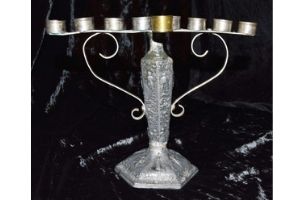
A blog post by Collections Manager Joanna Church. To read more posts by Joanna click HERE.
This week, my college alumni Facebook group has been running a “show us your menorah” thread. Even better than the fun photos submitted are the short stories about each menorah’s origins and meaning, from heirloom antiques to kids’ craft projects and everything in between. Naturally enough, this got me thinking about the JMM’s collection of hanukiahs. Each one has a story to tell, whether through information shared by the donor, or physical evidence of use and love.
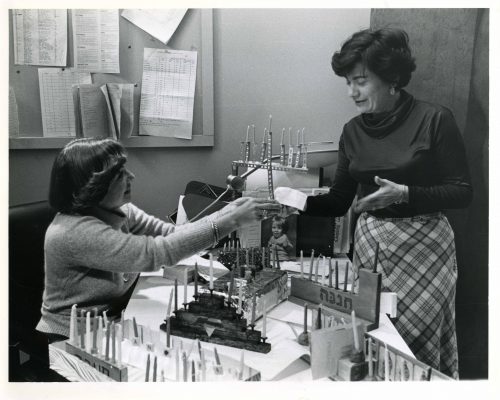
I thought at first that I’d try to identify my favorite menorah for today’s post, and I started going through each catalog record as if it was a contest or an audition. But I couldn’t decide! So instead of claiming a winner, I settled on giving this particular example a few moments in the spotlight.
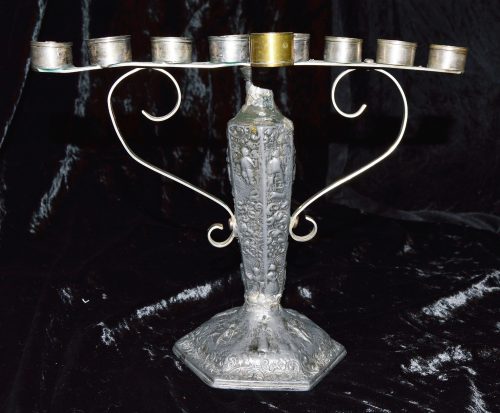
This menorah is not the largest (or smallest, for that matter) one in our collections, nor is it the fanciest or oldest or any other superlative along those lines… but it caught my eye because it looks like it was created out of several pieces, with the contrast between the clean, modern arms and the more rococo-looking base. The lamp consists of eight silver oil cups, plus a brass shamash, on a silver bar atop a repoussé metal base (likely an alloy, perhaps white metal or Brittania metal), with curled silver arms supporting the top. These disparate pieces are of very different styles, and a close look reveals the various screws and solder holding it all together, but the finished lamp has its own unique look amongst the more ‘typical’ pieces in our collection.
A little further investigation brought to light this story from the donor, Regina Weistock (1912-2006):
“The 8 silver cups that are soldered on the silver bar were used by Reb Levi Itzahak of Berdichev. My parents [Hilda Senenovsky and Hyman Weistock] were born in Berdichev and an ancestor of my father’s bought these silver cups (there were 9 of them) for 3000 rubles. For a number of generations they were handed down to the youngest in the family. My father was the youngest in his family. When he was leaving Russia for the United States [around 1899] an older brother wanted to buy them from him, because he said ‘when you get to America you will become a goy.’ This, of course, did not happen.
“My father died in 1925. By that time we had only the 8 cups. My mother took them to a jeweler by the name of Michaelson and asked him to put together some way so no more would be lost. Mr. Michaelson fashioned the silver bar and side arms and then connected them to this interesting stand. Since my father’s death we stuck candles into the little cups. They are actually made for oil and wick.”
That would likely be Nathan J. Michaelson & Son, who advertised in the 1926 Baltimore City directory as a “manufacturing jeweler” at 722 E. Baltimore Street. We don’t know if the “interesting stand” was a leftover piece in his workshop, or an antique he acquired with the thought of turning it into something else. The pattern is so worn that I’m not sure what it originally depicted; this part definitely warrants a little more research.
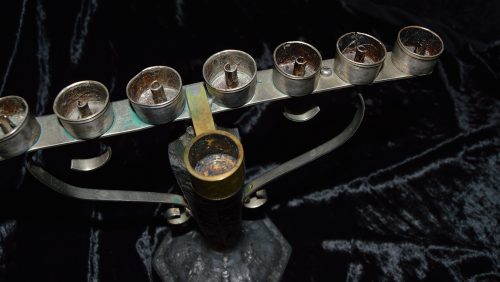
Though Ms. Weistock didn’t expand on the history of the menorah after the 1920s, it clearly enjoyed many Chanukah celebrations. True, the base may have been worn or damaged before Mr. Michaelson put it to a new use, but it seems more likely that much of the wear and tear came thanks to the Weistock family (a large one; Hyman and Hilda had seven children) and their annual use of a treasured heirloom. Many of the menorahs in our collection are broken and/or repaired, reminding us that these artifacts are not simply for show; they were handled, loved, and maintained, for years or even generations, moved from home to home and country to country.
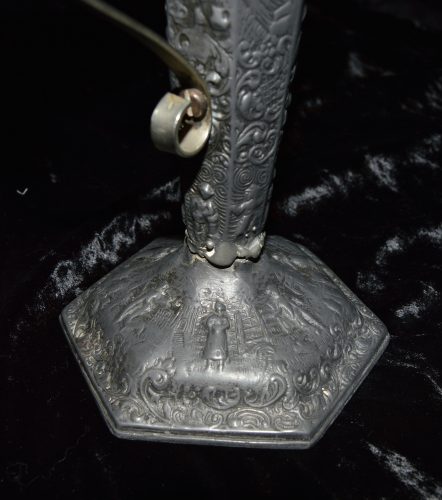
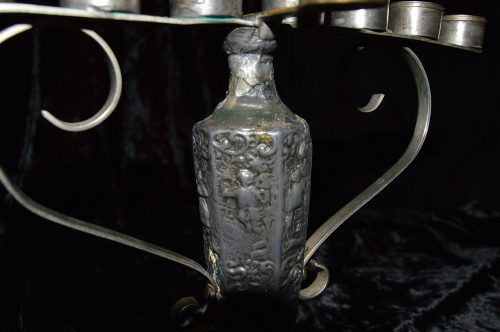
In addition to the history of the silver cups, Ms. Weistock added another element that had meaning for her: a connection to the broader world of Judaica and art history. She concluded her notes, “When in 1949 I visited the Bezalel Museum in Jerusalem I found there a room given over entirely to Hanukiah. In that room is a glass cabinet that contains a few Hanukiah that look exactly as this one and they are labelled as dating circa 1750. Mr. Michaelson must have known of these when he got the base he did for our silver cups.”
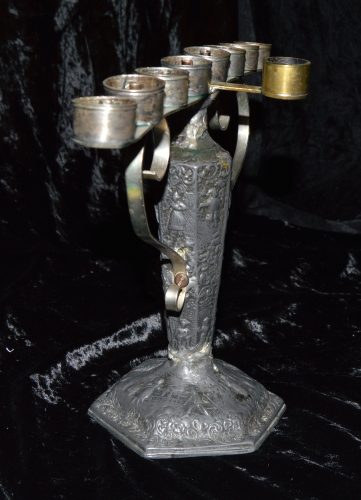
So, JMM blog readers, show us your menorahs! What stories and memories do they hold? (We promise it’s not a contest!)
